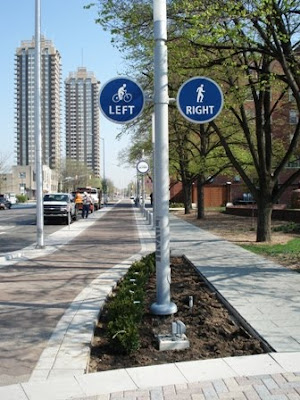UrbanCincy recently had a chance to catch up with a new friend of ours that we met back in early September at a lunch over at Findlay Market. Andrew Bench is brand new to town and has seen quite a bit of the developments in rail transit first hand around this country of ours. He has worked in the rail transit industry for twelve years and has been in construction for a total of two decades. He has had a chance to settle into Cincinnati over the last six weeks since we last saw him, and we were interested to check in with him and get his initial observations about his new surroundings.
Living in Downtown Cincinnati – It’s amazing how small the city blocks are here especially compared to the last city I was in (Salt Lake) which makes the urban core so walkable. Five blocks here is about the same distance as two and a half blocks in Salt Lake. I do find it frustrating that there are no easy grocery options in downtown. I don’t always have a car and aside from the Over-the-Rhine Kroger and Findlay Market there isn’t much else available. If even just the streetcar was in place I would be able to get on and ride it up there, and get to other options such as the Kroger at the University. A few years from now I’d be able to ride over the river to Kentucky. The options are endless really.
Regarding Rail Transit in Cincinnati – A phrase from the poem titled Maud Muller written by John Greenleaf Whittier sums up the whole situation. It says “For of all sad words of tongue or pen, the saddest are these: “it might have been!” I think Cincinnati has the potential for a rail transit system that would spur redevelopment. Imagine a streetcar connecting neighborhoods to the core, light rail connecting the suburbs, and high speed rail for those trips to Columbus and even further.
An example of How it All Fits Together – We were in Portland for our annual meeting a few years back and we were waiting for the streetcar. Along it came, and it was packed, but everyone got out where we were because it was the MAX connector which is their light rail to the suburbs. Clearly people were using the combined streetcar and MAX to commute to and from work downtown. I was just in Portland earlier this year and there is still new development happening on the streetcar line ten years after the first phase opened up!
Salt Lake is More Progressive Than Cincy – The typical response is “NO WAY!” But they have a $2.6B program underway that is scheduled to be finished by 2015. It includes a mix of rail transit and after living there it is clear that they are thinking about the future, not just for right now. They are investing heavily in rail transit to solve problems and attract young folks to their city, essentially making sacrifices now for future generations. They fought and fought the light rail but now the cars are jammed pack and all the outlying cities not along the route are asking to be included.
About Issue 9 – Issue 9 is about options and if it passes the city will be crippled for years to come. It’s about all kinds of rail transit options for the city of Cincinnati which in turn could make the Metro more useful and profitable if it is paired up right to compliment the rail transit choices. Cincinnati really does have the potential for redevelopment and growth and need to look at this issue as if they are solving for future transportation problems for their kids.
Come out and help defeat issue 9 by joining a few of your UrbanCincy writers at the Cincinnatians for Progress phone bank at 1344 Vine Street tonight! Last week we had quite a crowd and hope for the same tonight! Just comment on the post if you want to join us. Please plan on bringing your own phone along though as there are only a few down there.
In the meantime, enjoy this video from our friends at Soapbox Media. Andrew let us know it was his favorite one of the all the No on Nine videos making the rounds.



